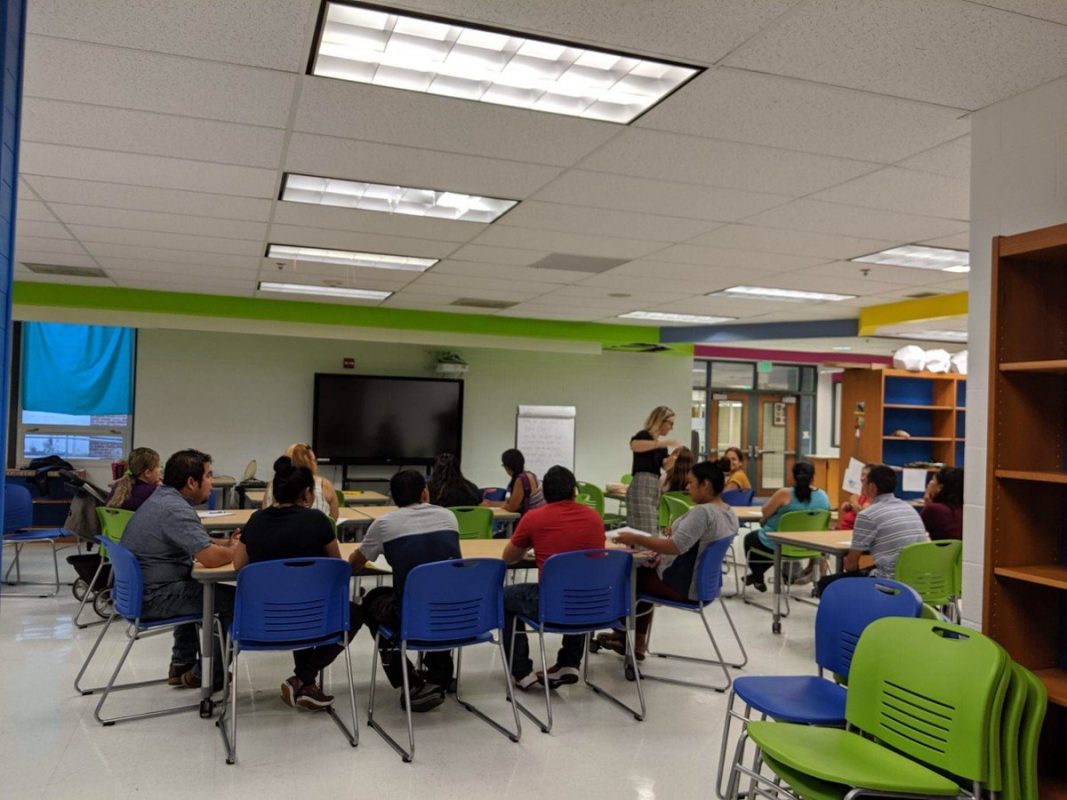
For Maryland school teachers, simulating an environment comparable to a normal classroom in the midst of the coronavirus pandemic has presented a need for ingenuity. Virtual learning instruction and curriculum packets are being administered, food distribution stations for students who rely on school lunches have been established, and instructors have begun teaching remotely via video software.
“Virtual learning can never take the place of in-person learning in education,” says Cheryl Bost, a Baltimore County teacher currently on leave to serve as the president of the Maryland State Education Association. “Teachers by trade like to [think] ahead and figure out what we can accomplish. With the issues coronavirus presents, they feel like they’re keeping the kids learning, but they’re not going to be able to go too far ahead.”
The pandemic has been a disruptor in all walks of life, from the business and economic sectors to the food industry and in healthcare systems. But the problems it presents for the education system are comprehensive.
“We want to make sure our students are not impacted in their learning,” says Katie Poist, a eighth grade math teacher at Lakeland Elementary/Middle School in southwest Baltimore. “We take into account what they have available to them at home as far as technology, Internet access, and parental support.”
But what might be an easily addressable conflict for one school district could be a widespread problem in another. These equity issues—already present before coronavirus—have become even more prevalent throughout the last month.
“Our kids didn’t need access to technology outside of school [before coronavirus],” Poist says. “We didn’t use a ton of tech at school, so kids were able to be successful and we could help them learn. Now, it’s a huge shift.”
Coincidentally, major education reform aiming to address these inequalities and bridge gaps in education from one region to another passed in the General Assembly last month. The issues coronavirus has wrought are what advocates for the bill dubbed the Blueprint for Maryland’s Future —which currently sits on Governor Larry Hogan’s desk awaiting signing—have been stressing. The first three years of funding for the bill took effect last year, but proponents are hoping for a long term agreement.
“There are access issues in poor urban districts compared to public districts with much greater resources,” says Kristen McQuillan, a former Baltimore City School System employee and current academic director at The New Teacher Project (TNTP), where she advises school superintendents and academic offices. “This has put that issue into the forefront and the spotlight in a way that people can’t ignore.”
McQuillan says that being able to observe where these access problems are most prevalent helps explain why it costs more to educate children in certain districts compared to others. It’s why many advocates, including Poist, feel that the Blueprint’s objectives—such as increasing teachers’ salaries and providing access to Pre-K for all 3 and 4-year olds in low-income families—are vital.
“Schools are more than just education for children—they are social development,” Poist says. “The big inhibitor being a Baltimore City teacher is striving to be equitable.”
During the pandemic, Poist has helped her students access videos that Lakeland’s school district has provided. She also pre-records 15-minute video instruction to capture the day’s big picture. In the midst of this, there is also synchronous learning, where Poist is able to check in with individual students and assist them with any questions they may have.
“It’s really constant communication,” she says. “As a school, we have to figure out how to function as a team while meeting all of our kids’ needs at home.”
Over at Pine Grove Middle School in Loch Raven, Vernon Fains is adapting to teaching art remotely, as the usual materials his students would have in the classroom aren’t at their disposal. Since art is such a visual medium, Fains says that being disconnected from his students and their usual environment has its challenges.
“It’s a little tougher for the arts, because we can’t use certain materials and we can’t get our hands dirty like we normally would,” Fains says. “I think of the arts as a way for students to come in and express themselves in ways they can’t in other content areas. I miss that interaction.”
Fains says that these limitations have forced him to reevaluate how he teaches. He had his first virtual class meeting earlier this week, where he encouraged students to go out in nature and think viscerally about what they were seeing.
Both Fains and Poist have also made a point to check in on their classes’ well being. They’ve noticed their students’ moods perk up at the opportunity to see familiar faces that remind them of their routine at school.
“I think they’re excited to see and hear from us, and we’re excited to see and hear from them,” Fains says. “That moment of talking with us and getting a little bit sense of normalcy has been missing.”
As it stands, it’s unclear as to when, or if, Maryland schools will reopen this school year. Closures are in place until at least April 24, and while this isn’t ideal, it does give educators and students the opportunity to further adapt to their surroundings as they wait for the time when it will once again be safe for everyone to be together and learn.
“We miss being in the classroom,” Fains says. “We miss our students. We just want them to know that we want them to stay well and we are here for them.”